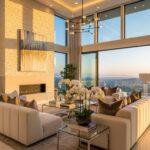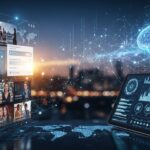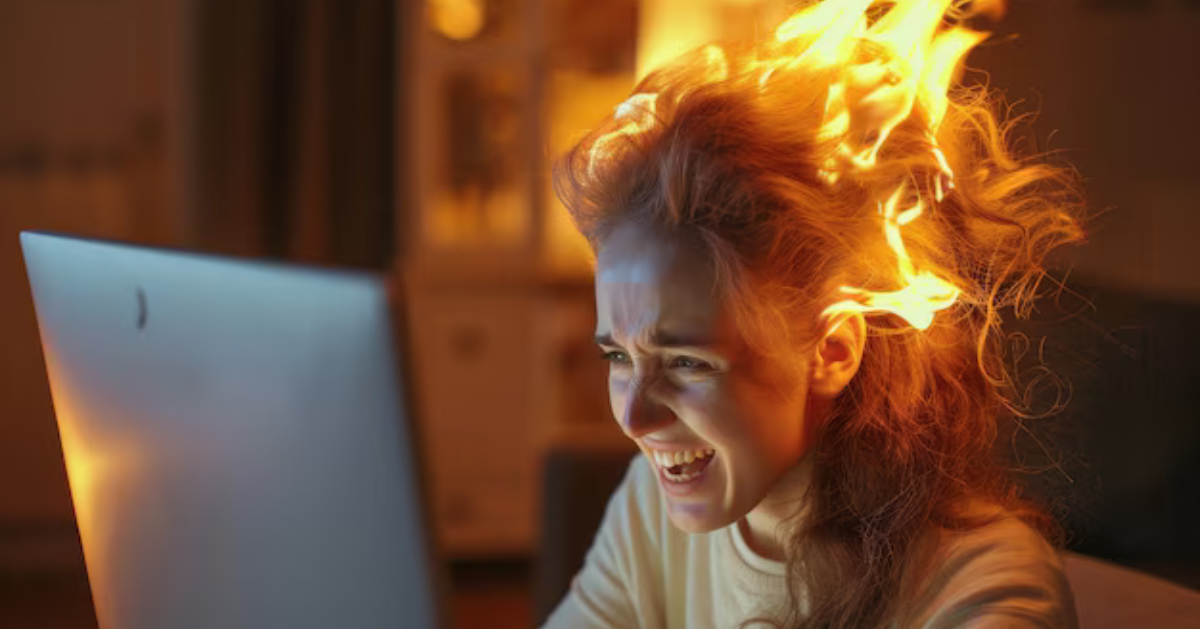Hiba Schahbaz is a Brooklyn-based artist who works in the centuries-old art form of miniature painting. She trained in miniature painting at the National College of Arts in Lahore, Pakistan and received an MFA in Painting from Pratt Institute in New York City. Schahbaz, a Muslim woman of color, speaks critically and poetically about western and middle eastern culture and the construction of her own identity through an international lens. We were excited to speak with her about the heightened political tensions between her two homelands and the importance of her artistic voice. Thank you for speaking with us Hiba!
Your work seems to combine styles of traditional Indo-Persian miniatures with western neoclassical nudes, such as your painting Self-Portrait as the Grand Odalisque and Self-Portrait as Leda. What characterizes the Indo-Persian style miniatures, what drew you to integrate it with the western neoclassical style and why did you choose to reinvent these images as self-portraits?
I trained in the ancient tradition of Indo-Persian miniature painting at the National College of Arts in Lahore, Pakistan. Miniature painting has been the cornerstone of my artistic practice for the last 15 years and is integral to how I think and paint. It can be seen in the non-realistic representation of my figures, the detailing of their hair and faces, as well as the stylization of natural elements. A lot of my imagery derives from the vocabulary of miniature painting.
Right now, I am painting larger-than-life self-portraits after masterpieces painted by men. My first work in this series was a self-portrait as Ingres’ La Grand Odalisque. When I attempted to pose myself as her, I sprained my neck, and subsequently began seeing, that in many of these masterpieces of iconic female beauty, the woman was almost decorative. Her body was distorted to create an object of desire; a vessel for a male painter to project his emotions. Through my art I am reinventing these masterpieces painted by men into powerful self-portraits in an attempt to reclaim my female body, my history, gender, femininity, sexuality, and race.
Do you think there is a history of hypocrisy or a double standard within nude female imagery? In your opinion, how does the context of the female nude change based on the gender or race of the artist?
Male artists have been using the male gaze to depict women since the beginning of time. This has defined and dictated how women are expected to look and behave in order to be approved of and accepted in society. It has cultivated an expectation that women are meant to be beautiful and passive. Women painted by men often depict a divided femininity, the madonna or the whore, which fulfills masculine needs and perpetuates the harmful notion that we are one or the other.
In my painting, I work with the female gaze. The female gaze is a cultural critic as well as an empathic champion for women. When I paint myself nude, as a Muslim woman of color, I am reclaiming my body from the male gaze as well as from the stereotypes that are attached to my religion and race. I am my own subject. I utilize my body, mind, emotions, and experiences to create my self-portraits. Through my nude female forms I strive to make my avatars powerful heroines who are self-accepting and self-sustaining. They know what it’s like to be the object of the male gaze and can acknowledge and return the gaze of the viewer. They are no longer passive objects; they are present with their audience, and are witnesses to the inner life and autonomy of women.
What is the significance of using tea in your work?
The use of tea in my work derives from a traditional miniature painting technique called neem rang, which involves painting with black tea and a small amount of pigment. My work is an adaptation of this ancient technique. I often paint my figures with tea amidst a colored background, and sometimes entire paintings are worked on with tea.
Has the current political climate affected the ways in which you work? Has your productivity, or intentionality been affected?
As an artist it is important for me to prioritize making art through the ebbs and flows of life. The political climate has taken an emotional and physical toll but I maintain my practice of painting daily and following where my art takes me.
How have conversations in the political sphere changed the way your work is viewed? Do you think your work has become more politicized now and if so, has it been intentional?
My work is very personal. However, as a Muslim woman of color painting nude self portraits, the personal aspect of my paintings also become political when seen through the lens of the female gaze. It is possible that the current political climate will affect the way in which my work is viewed but I am not intentionally working to become a more political artist.
How has your artistic community in Brooklyn responded to the political climate? Has your feelings about your American community changed since the inauguration? If so, how? What about your perception of the United States?
It feels like everything has changed since the inauguration. With its diverse community and thriving art world, New York used to feel like utopia, but it increasingly clear that this is not the case. Now, as a Muslim immigrant and a woman of color, I struggle with feelings of paranoia every time I walk down the street and I wonder if the people around me hate me. I stand far away from the subway track, just in case someone tries to push me in front of a train.
That said, many positive aspects of humanity have emerged. People are becoming aware of their own nativism and racism and and facing up to it in constructive ways. They are coming out of their bubbles to see the world as it truly is and tapping into their humanity. We are seeing people organize and stand up for each other, and the power of the collective over the individual. A sense of community and safety is being formed for marginalized groups. I feel everyone is trying to be better, more conscientious.
In addition, the Brooklyn art community has come together to voice their concerns and protest the new regime. Both artists and galleries have been focusing on increasingly political shows, and putting together shows which benefit organizations like Planned Parenthood and the ACLU.
I moved to New York from Karachi when I was 29. I had a very traditional upbringing in Pakistan, surrounded by a rigid patriarchy. I spent most of my life living in a country where I was always aware that I had few rights and was always concerned with protecting myself. This resulted in me self-censoring a lot of my work.Moving to New York was a life-changing experience. It gave me the opportunity to process my previous experiences and express myself in a safe environment. I’m growing in the freedom to explore my vision and voice, and be able to exhibit my work without fear of repercussion.
This shift in cultural landscape has also permitted me to challenge the rules of my traditional miniature training and explore my individual voice. Now, I often work with imagery that is foreign to miniature painting, combining it with traditional techniques to create my own hybrid vocabulary. This allows me to prioritize the content of the work and communicate specific ideas. Through combining widely different histories, I am attempting to bridge geographical, religious, and cultural boundaries.
This naturally brings with it a responsibility to innovate, as well as preserve our individual cultures and histories. As an immigrant artist who lives between two worlds, I have always felt the need to responsibly depict and honor my cultural history, while simultaneously staying true to my own vision.
Since the election have you felt a push toward changing directions in your paintings? Are there any new issues or concepts you interested in integrating into your work? Do you have any new series or shows coming up that are inspired by the developing political dialogue?
I believe that all art reflects the moment in time it was made in. An artist’s environment and experiences are constantly filtering into their work. My painting process has always been very intuitive and I allow it to lead me where it will. One change that I have noticed is that I am reading more about American history, contemporary art, race, and feminism. I am more interested in understanding the society and culture that I live in. My painting process, however, remains self governing, so if there is a change in my work it will most likely be subconscious and organic.










